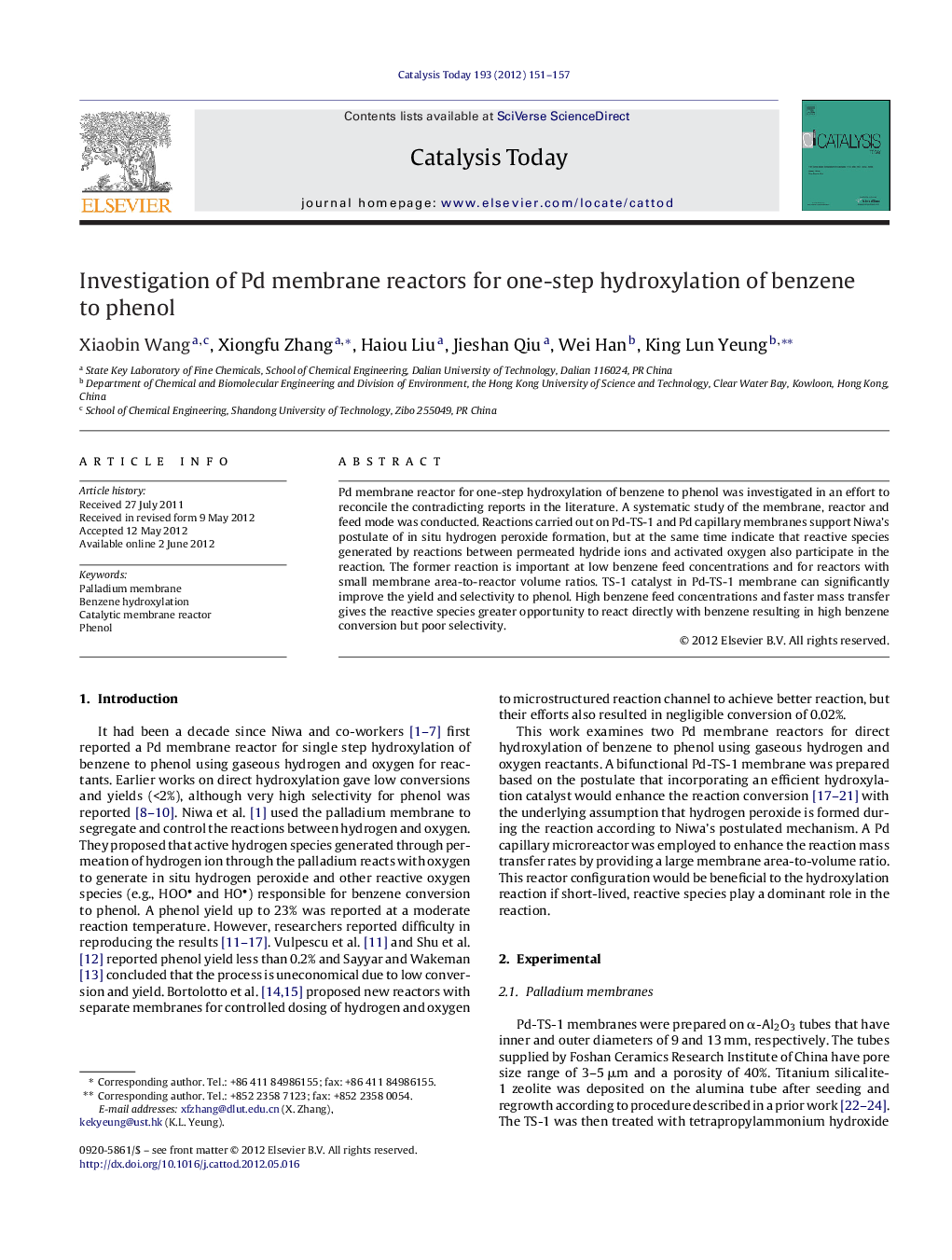| Article ID | Journal | Published Year | Pages | File Type |
|---|---|---|---|---|
| 55075 | Catalysis Today | 2012 | 7 Pages |
Pd membrane reactor for one-step hydroxylation of benzene to phenol was investigated in an effort to reconcile the contradicting reports in the literature. A systematic study of the membrane, reactor and feed mode was conducted. Reactions carried out on Pd-TS-1 and Pd capillary membranes support Niwa's postulate of in situ hydrogen peroxide formation, but at the same time indicate that reactive species generated by reactions between permeated hydride ions and activated oxygen also participate in the reaction. The former reaction is important at low benzene feed concentrations and for reactors with small membrane area-to-reactor volume ratios. TS-1 catalyst in Pd-TS-1 membrane can significantly improve the yield and selectivity to phenol. High benzene feed concentrations and faster mass transfer gives the reactive species greater opportunity to react directly with benzene resulting in high benzene conversion but poor selectivity.
Graphical abstractDifferent Pd membrane microreactors were designed by inserting a stainless steel rod into the conventional Pd membrane tube and using capillary ceramic tube as support. Summarization and comparison among the publications and ours were made and discussed. The results show that high benzene feed concentrations and faster mass transfer gives the reactive species greater opportunity to react directly with benzene resulting in high benzene conversion. The structure of a Pd membrane reactor seems to be important.Figure optionsDownload full-size imageDownload high-quality image (313 K)Download as PowerPoint slideHighlights► The structure of a Pd membrane reactor has great influences on the reaction. ► High benzene feed concentrations and faster mass transfer benefits the reaction. ► Pd capillary membrane reactor shows higher catalytic activity than the conventional Pd membrane.
